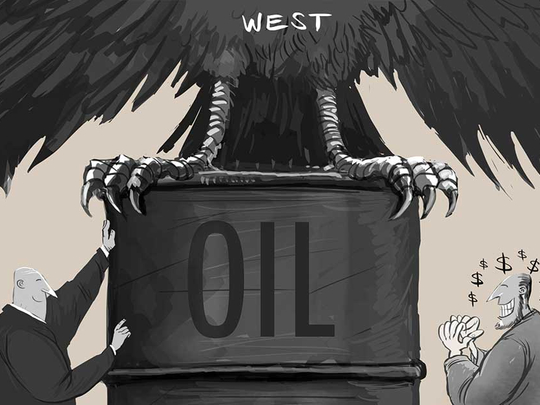
As global economic growth picks up practically everywhere, oil producers are becoming increasingly hopeful that the recent impressive price recovery will continue.
But, if those hopes are to be fulfilled, not only will producers have to control what they can (by maintaining production discipline); what lies beyond their control (output from shale and the value of the dollar) will also have to work in their favour.
Just over three years ago, oil (WTI) was trading above $100 (Dh367.30) per barrel. But, by early 2016, prices had plummeted to around $30 per barrel, owing to a combination of sluggish demand, alternative supply (particularly shale oil and gas from the US), and a new Opec production paradigm under which the cartel, led by Saudi Arabia, withdrew from acting as a “swing producer”.
In the wake of the resulting collapse of export receipts and budget revenues, Opec adopted a new approach, based on a modernised production agreement with two key features: greater flexibility for countries facing especially complex internal conditions (such as Libya) and the inclusion of non-Opec producers, particularly Russia.
Together, Opec and non-Opec countries established a floor from which oil prices could bounce. With the pick up in global growth and the emergence of geopolitical uncertainties (which could constrain output in some oil-producing countries), oil prices have rebounded to above $60 per barrel.
The current global growth phase is particularly good for the price of oil (and other commodities), because it is synchronised, real, and, increasingly, self-reinforcing. It is being powered by simultaneous recovery in the systemically important economies of Europe, Japan, the US, and the emerging world. And it is based on durable gains in economic activity, rather than just financial engineering.
Given these features, today’s global growth spurt is starting to generate a virtuous cycle among consumption, investment, and trade. And that dynamic could pick up even more momentum, especially if the recent pro-growth measures in the US and the endogenous healing in Europe are buttressed by structural reforms, more balanced demand management, and improved international policy coordination.
In fact, the downside risks for oil prices have shifted from the demand side to the supply side. Higher oil prices tend to erode production discipline in Opec, particularly by members (such as Nigeria and Venezuela) that have historically rushed to secure higher revenues to mitigate difficult budgetary conditions, at the expense of their peers (such as Saudi Arabia and the UAE).
This tendency makes coordination with non-Opec producers more difficult. Add to that the increased production from alternative sources (most consequentially, shale) that higher prices encouraged, and the beneficial demand effects are offset, if not overwhelmed.
Yet, with some minor modifications to the current agreement, Opec members should be able to maintain their collective production discipline, assuming the will is there. They may find it harder to continue to rein in non-Opec countries. But, with thoughtful negotiations that incorporate insights from game theory, this, too, is possible.
When it comes to the factors over which oil producers have less control, the outlook is less hopeful. The depreciation of the dollar — which fell 10 per cent, in trade-weighted terms, in 2017 — has helped to drive up oil prices, but it is likely to be halted and then partly reversed.
Avoiding that outcome would require Europe and Japan to continue to outperform market expectations, both overall and, more important, relative to the US. Moreover, the European Central Bank and the Bank of Japan would need to tighten monetary policy — including accelerating the taper of their large-scale asset purchases — faster than markets expect.
Finally, there is the challenge posed by increased shale production. And the fact is that there is little the traditional oil producers can do to counter shale producers’ likely response to higher prices.
Given this, oil producers would be well advised to treat recent oil-price gains as a temporary windfall, not a permanent state of affairs or even — unless there is a notable geopolitical shock — a trend that is likely to intensify in the year ahead. This means that producers should resist the temptation to use their higher revenues for new recurrent spending.
And they should act quickly to reinforce their collective discipline to minimise the risk of a free-for-all that negates the hard-earned gains of recent years.
— Project Syndicate
Mohamed A. El-Erian is Chief Economic Adviser at Allianz and is the author of ‘The Only Game in Town: Central Banks, Instability, and Avoiding the Next Collapse.












